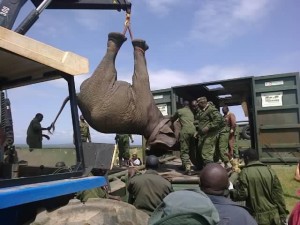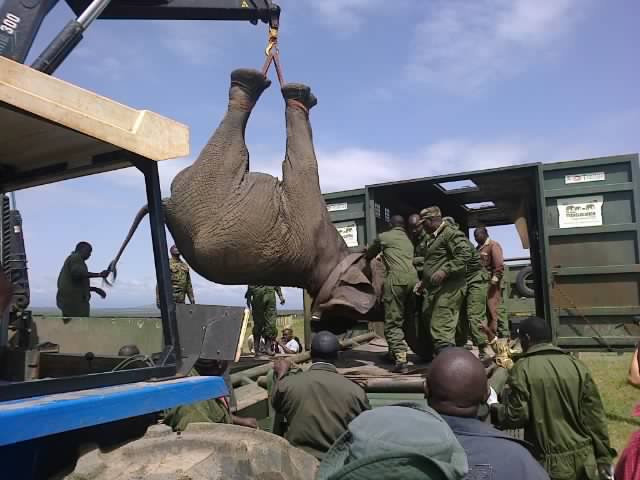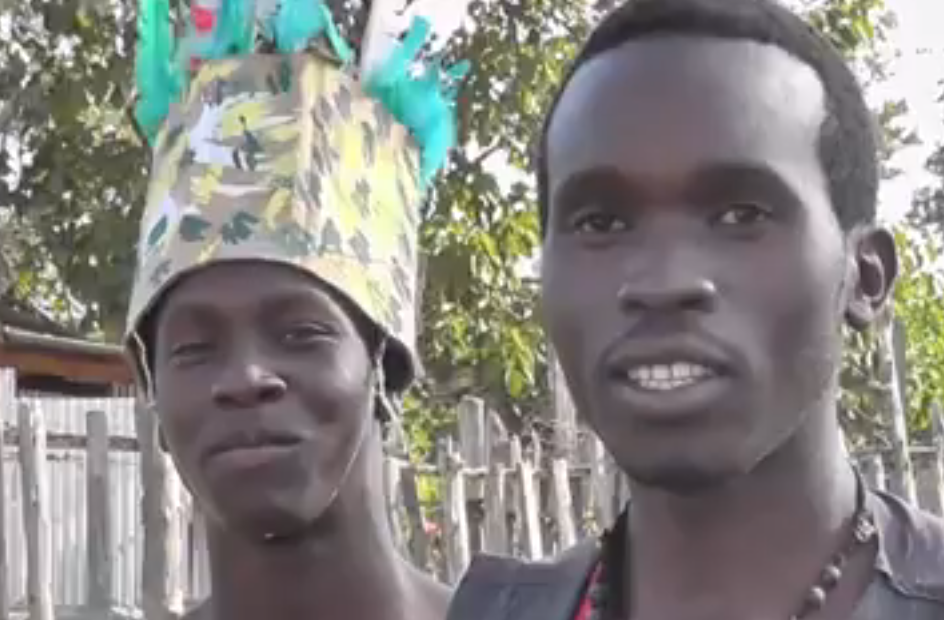The Laikipia-Samburu ecosystem has the second largest population of elephants in Kenya making it a hotspot for human-elephant conflict. In order to mitigate this conflict, Ol Pejeta initiated an elephant monitoring programme in 2005 to identify habitual fence breakers so that appropriate management interventions could be undertaken. The monitoring is carried out by a skilled elephant tracker armed with GPS, binoculars and camera to check on every fence breakage or crop raid and store data in a specially designed database. Thanks to this system, the habitual fence breakers are well known.
Over the years, different intervention strategies such as collaring, de-tusking and even upgrading the electric boundary fence have been used to control fence breaking and crop raiding elephants within the Conservancy. However, these interventions were not always effective as a few individuals continued to break fences and studies were carried out to find out why.

Between the 11th and 21st of June, 2013, years of monitoring finally culminated in an elephant translocation exercise in and around the Ol Pejeta Conservancy. As part of the long-term solution to the human-elephant conflict in the region, the Kenya Wildlife Service (KWS), in conjunction with Ol Pejeta and Space for Giants, translocated nine elephant bulls from the conservancy and neighbouring ADC Mutara to Meru National Park which is surrounded by forests reducing the risk of the elephants getting into conflict with humans. The translocation exercise is also part of a national plan to restock Meru National Park.
The intensive translocation exercise started with identification of the persistent fence breakers by Ol Pejeta’s elephant tracker. Once spotted, a helicopter crew with the KWS vet flew over, darted and anaesthetised the elephant which was then lifted by a crane onto a waiting truck. This truck then took the elephant to a bigger truck with a crate where the anaesthesia was reversed and the animal ready for transport to Meru.
During the exercise, some of the elephants were fitted with GPS collars to establish their movements and behaviour in their new range. Utilising new monitoring techniques, one elephant was fitted with a GPS transmitter drilled into his tusk. Henrik Barner Rasmussen of Savannah Tracking drilled a hole into Liban’s tusk, inserted the GPS transmitter then covered it up. This is the first time a GPS transmitter has been inserted into an elephant’s tusk for monitoring purposes.
The GPS transmitters fitted on the elephants will enable KWS and Space for Giants to continue monitoring these animals and assess the effectiveness of translocation as an intervention strategy for the mitigation of human-elephant conflict. It is hoped that the post-translocation monitoring will provide valuable lessons for elephant conservation.
by Angela Omune


